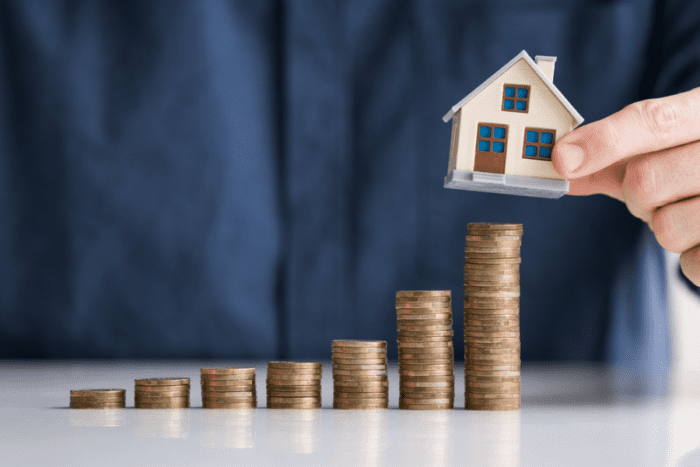Do I Have to Pay US Taxes on the Sale of My Primary Residence?
April 22, 2025
To most people, a home represents far more than four walls, a collection of rooms and, if you’re lucky, a plot of land. Your home is famously your ‘castle’, to quote 17th-century judge Sir Edward Coke.
Home is a sanctuary, an escape from the madding crowd, a place of refuge where memories are made. It just so happens that your home is one of the single most significant investments you’ll ever make.
As such, there is a lot at stake when you decide to buy, sell or invest in property. The value of home ownership and its advantages for a stable society are nowhere more keenly expressed than in the US.
When it comes to moving on, upscaling, downsizing or building a property portfolio, it pays to be aware of the US tax rules on the sale of a principal residence.
The information in this article is not tax advice. These are simply some of the general rules that apply to capital gains tax when you sell your home.
If you want more detailed information about how the tax laws and rules apply to you, we recommend consulting a tax specialist for more specific advice on your situation.
At Nomad Capitalist, we work with international tax attorneys and tax accountants to coordinate global plans for seven- and eight-figure entrepreneurs and investors.
Learn more about our holistic Nomad Capitalist plans and how we can help here.
Capital Gains on Primary Residence
When selling a primary residence in the United States, understanding the tax implications of capital gains is crucial.
Capital gains refer to the profit from selling an asset, like a home, for more than its purchase price. In the context of a primary residence, the Internal Revenue Service (IRS) provides certain exclusions if you meet specific conditions:
- You may exclude up to US$250,000 of capital gains from your income if you are single
- The exclusion can be up to US$500,000 for married couples filing jointly.
To qualify for this exclusion, you must have owned and used the home as your primary residence for at least two out of the five years preceding the sale. This is known as the ownership and use test.
Additionally, you cannot claim the exclusion for another home sale during the two-year period before the sale.
This ensures that the exclusion is not used excessively. Certain exceptions apply, such as in cases of divorce, death of a spouse or changes in employment.
These may allow you to qualify for a partial exclusion. It’s essential to consult a tax professional to understand your specific situation.
Capital gains tax may apply to those who do not meet these criteria.
The rate depends on your income level and the length of time you owned the property. Understanding these rules helps you plan better and save on taxes when selling your primary residence.

How Capital Gains Tax Applies When Selling Your Home
The answer to this question depends on a wide variety of circumstances.
If you’re trying to calculate your potential capital gains tax, starting with an accurate estimated selling price is extremely important.
If you don’t start with an accurate number, you’re not going to end up with an accurate estimate of the capital gains taxes you might owe.
When you sell your primary residence, you are excluded from up to US$250,000 of gain for a single filer and up to US$500,000 for joint filers.
In order to get the full exemption, you must meet specific criteria. It is also possible to get a partial exclusion.
You must have used the home as your primary residence for two out of the last five years, and you can only take advantage of this exclusion once every two years.
If you’re attempting to take advantage of this on more than one property, it is extremely important to plan the sale dates carefully.
So, how do you determine whether or not you have a gain or loss on the sale of your home?
To calculate the gain or loss, you start with your selling price, basically everything you received in the sale of your home. Then, you subtract your selling expenses.
These are all of the costs and fees you paid to get the home sold, and then you subtract your adjusted basis.
The adjusted basis is what you paid for the home, along with some of the costs and improvements you made while you owned it.
When you subtract the selling expenses and the adjusted basis from your selling price, that results in your gain or loss on the sale of the property.
Now, let’s cover the potential rate you could be paying if you owe capital gains taxes.
Calculating Your Capital Gains Exposure
According to the IRS, in 2025, the tax rate on most net capital gains is no higher than 15% for the majority of individuals.
Some or all net capital gain may be taxed at 0% if your taxable income is less than or equal to US$48,350 or less, and for married couples filing jointly is US$96,700 or less.
For 2025, the standard income tax deduction will rise to US$15,000 for single filers and US$30,000 for married couples filing jointly.
A capital gain rate of 15% applies if your taxable income is more than US$48,350 but less than or equal to US$533,400 for single filers.
Likewise, a capital gain rate of 15% applies if your taxable income is more than US$96,701 but less than or equal to US$600,050 for married couples filing jointly.
A net capital gains tax rate of 20% applies to the extent that your taxable income exceeds the threshold set for the 15% capital gains tax rate.
The rates outlined above are long-term capital gains rates.
Short-term capital gains are taxed as ordinary income. However, depending on where you live, you may owe additional tax on the sale of your primary residence.
Just as some states levy a state income tax, some, like California, also levy their own capital gains.
Some states, however, do not apply an additional capital gain tax. These include Alaska, Florida, Nevada, South Dakota, Tennessee, Texas and Wyoming.
If you are trying to determine how much capital gains tax you might owe on selling your home, it is important to start with an accurate estimated selling price.
If you don’t start with an accurate number, you won’t end up with an accurate estimate of your potential capital gains tax.

Reduce Your Capital Gains Bill When Selling
Are you thinking about selling your home and wondering what the tax implications are?
Simply put, your tax exposure is calculated by subtracting the cost basis from the selling price and then applying the relevant tax rate.
However, the math isn’t as straightforward as you may think because the amount realised from the sale can include deducting certain expenses.
The biggest one is the commissions paid, such as to a real estate agent, as well as some of the legal fees involved.
Some of your closing costs when you purchased the home can also be added to your cost basis, as can home improvements if, for example, you did a full kitchen remodel or added a new roof, heating or air conditioning system.
Let’s say you bought your home for US$350,000, and you had some closing costs and made some improvements to the value of US$50,000.
Now, your adjusted basis is US$400,000.
If you sell the property for US$800,000 and are a single filer, the taxable gain is US$400,000.
Some people confuse the gain on the sale as the selling price minus their mortgage balance. For the purpose of calculating the gain on the sale of your home, your mortgage has nothing to do with it.
If you’re a single filer and earn less than US$533,401 and more than US$48,351, you will be taxed 15% on US$400,000 less your exclusion amount of US$250,000, which would ultimately result in the 15% long-term capital gains tax being applied to US$150,000 (400,000 – 250,000 = 150,000).
This amounts to a total capital gains bill of US$22,500, which is 15% of US$150,000.
If you’re married and filing jointly, you have an exclusion of US$500,000 and, in this example, would have no capital gain tax to pay. That’s provided you passed the ownership and use test.
There isn’t a rule that says you can only use the exclusion once.
You can use it again as long as you do not exclude the gain from the sale of another home during the two-year period before the sale of your home.
If you own more than one home, you must determine which one is your principal residence. You can defer capital gains taxes on the sale of investment and business-use property using a 1031 exchange to reinvest the proceeds in a like-for-like property.
US Taxes on the Sale of Your Primary Residence: FAQs
If you have owned your property for more than a year, the capital gain on a sale is taxed at 0%, 15% or 20%, depending on your income tax bracket.
You may exclude up to US$250,000 of capital gains from your income if you are single. The exclusion can be up to US$500,000 for married couples filing jointly.
Yes, it is vital to consult a tax professional to ensure you understand the capital gains tax rules, can take advantage of all the available exemptions, and take steps to minimise your tax exposure.
To qualify for the capital gains exclusion exclusion, you must have owned and used the home as your primary residence for at least two out of the five years preceding the sale. This is also known as the ownership and use test.
You cannot exclude any amount from the proceeds of a sale from capital gains tax if you fail any of the three tests based on ownership, use, and the frequency of selling property.
Yes, provided they meet the ownership and residence requirements and haven’t remarried when they sell, widowers can increase the exclusion amount from US$250,000 to US$500,000.
If you are not a US citizen, the IRS imposes withholding tax on the proceeds of the sale of a US real property. Most US-source income received by a foreign person is subject to a 30% tax. In the case of US real estate, following the rules laid out in the Foreign Investment in Real Property Tax Act of 1980, non-resident aliens (which includes foreign individuals, Corporations, Partnerships, Trusts and so on) are generally subject to a 15% withholding tax on the gross amount of the property sale.
Capital gain is calculated by subtracting the property’s adjusted basis (original purchase price plus improvements and certain expenses) from the sale price.
State tax laws vary, and some states may impose taxes on the capital gains from the sale of your primary residence. Check with your state’s tax authority for guidance.
Moving to a Country with No Capital Gains Taxes
Of course, one option for US citizens is to free themselves completely from the long arm of the IRS.
As well as being a high-tax country with a top federal rate of 37%, there are also state taxes to pay.
Not only that, as a US citizen who wants to live elsewhere, a citizenship-based model of taxation means you will forever be beholden to reporting your financial affairs to the IRS.
That’s unless you renounce your US citizenship. If you do, there are plenty of low-tax countries and even zero-tax options where you will pay no capital gains.
The list includes expat-friendly places like Switzerland, Hong Kong, The Cayman Islands and more.
There are also territorial tax countries that do not tax your worldwide income, such as Thailand, Malaysia, and Singapore in Asia and Panama and Costa Rica in Central America.
Apart from rare and very specific cases, there’s no escaping the taxman if you’re a high-net-worth individual in the US.
In exchange, your privacy, safety and standard of living are diminishing by the minute.
At Nomad Capitalist, we think it’s entirely reasonable to ‘go where you’re treated best’. And we can help you do that.
At Nomad Capitalist, we create and implement bespoke, holistic strategies for successful investors and entrepreneurs to legally reduce their tax bills and diversify and protect their assets. If you’d like to learn more, get in touch today.


Property Tax in Malta: Stamp Duty, Rental Income Tax, and More
Long-term property ownership is significantly more cost-effective in Malta than in most EU countries. While Malta imposes transactional taxes and unique taxation schemes, you will not incur traditional annual taxes after buying a property. In this guide, we’ll go over Malta’s unique property tax landscape to help you understand your obligations. We’ll cover: Does Malta […]
Read more

UK Inheritance Tax for Expats Living in Malta: Scope, Exemptions, and More
If you’re a UK expat who has resided in Malta for a considerable amount of time and are currently focused on estate planning, you may encounter a potentially complex tax scenario. You need to consider both the UK’s inheritance tax (IHT) and Malta’s taxation regulations, after which you should devise a tax-efficient strategy that maximizes […]
Read more

How To Open a Bank Account in Portugal in 5 Steps
Whether you’re preparing to relocate to Portugal or wish to conduct business in the country, opening a bank account is among the first steps you’ll need to take. Although the process is typically straightforward, there are some considerations to keep in mind before committing to any bank. In this guide, we’ll explain how to open […]
Read more





